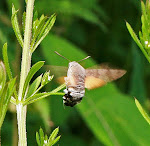On botanical visits to the Dolomites in 1998 and 1999, I managed to locate and photograph two very rare endemic species of Saxifrage both of which have an extremely narrow range of distribution. Both are members of Saxifraga Subsection Holophyllae, of whose 11 species, ten are endemic to Europe (and mainly to the Alps) and characterised by having entire or somewhat trilobed leaves. All members only occur at high altitudes. An additional more widespread member of the sub-section, Saxifraga sedoides L., was also present in the Dolomites whilst two other members: Saxifraga androsacea L. and S. muscoides Allioni were seen and photographed in the French Alps earlier. The photographs have been scanned in from transparencies and unfortunately this has resulted in a loss of quality.
The Sassolungo/Langkofel massif (the Forcella di Sassolungo is the col to the right)
Photographed on Piz Pordoi (purple-pink form) and the Forcella di Sassolongo (yellow form) in July 1998..
Saxifraga depressa was first found by Bartolomeo Franco at the beginning of the 19th Century. Although within the same taxonomic subsection as S. facchinii it has quite a different habit and bears pure white flowers. The epithet ‘depressa’ is thought to refer to its rather flattened leaf rosettes. A very interesting fact is that it is virtually restricted to black porphyritic intrusions in the dolomite, especially on damp scree, and only between 2100 and 2600 metres. As is the case with S. facchinii, it is also restricted to a very limited area of the western Dolomites from Arabba and a little way southwards. It is a very scarce plant with only about 12 localities known.
Saxifraga depressa (photos above and below - flowering and fruiting plants) on the Porto Vescovo above Arabba in July 1999
Saxifraga sedoides (photo below) is much more widespread than the two discussed above and is quite frequent in the Italian Dolomites. It was photographed there on the Gardena Pass in 1998.
Plants of Saxifraga muscoides (photo below) occurred very locally as small cushions on the limestone also at the summit of the Col de l’Iseran in August 1997.
.jpg)
.jpg)
.jpg)
.jpg)


.jpg)
.jpg)
.jpg)






No comments:
Post a Comment